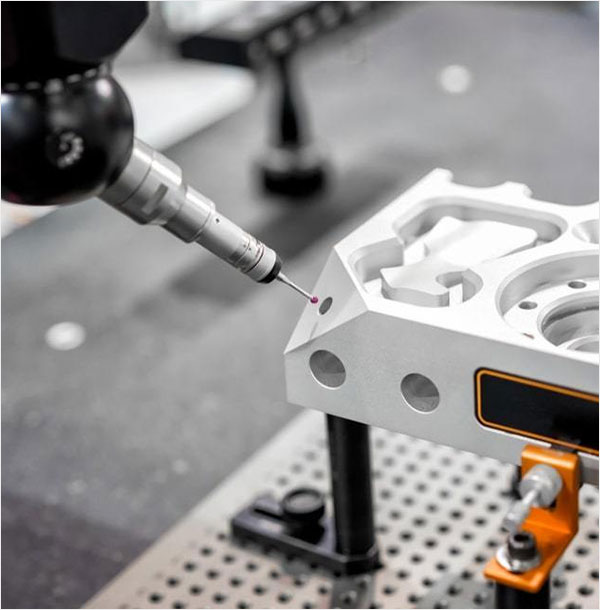CMM Services – Coordinate Measuring Machines
Supports high-precision service of coordinate measuring machine and shape evaluation for precision products.
In this service, we use CNC’s coordinate measuring machine to measure dimensions for drawings and 3D models, and submit the measurement data by output methods such as inspection tables and model matching. We can handle a wide range of products from small parts to large products, and provide accurate measurement data for various objects regardless of industry. We have a large number of various size / manufacturer measuring machines and collation software so that we can provide the optimum measurement results for the measured object, evaluation content, and required accuracy.
What is CMM?
CMM is short form of coordinate measuring machine, generally applies a contact to an object on the stage, acquires three-dimensional coordinates from the length, width, and height, and obtains the dimensions, positional relationship, contour shape, geometrical tolerance, etc. of the object. It is a stationary measuring machine that can measure with high accuracy. In addition to being able to record measurement data of objects, it is also possible to calculate various values by various calculations.
In addition, with the recent spread of 3D printers, it is also being used for rebus engineering, which measures the 3D dimensions of existing parts and standard parts and produces prototypes with 3D printers based on the data.
The information of the measurement points by the CMM is recorded as 3D coordinates (X, Y, Z). By combining the coordinate information, you can create a two-dimensional or three-dimensional geometric element.
- Two-dimensional geometric elements: lines, faces, circles, points, etc.
- Three-dimensional geometric elements: spheres, cylinders, cones, etc.
The combination of these factors measures dimensions, tolerances, and so on.
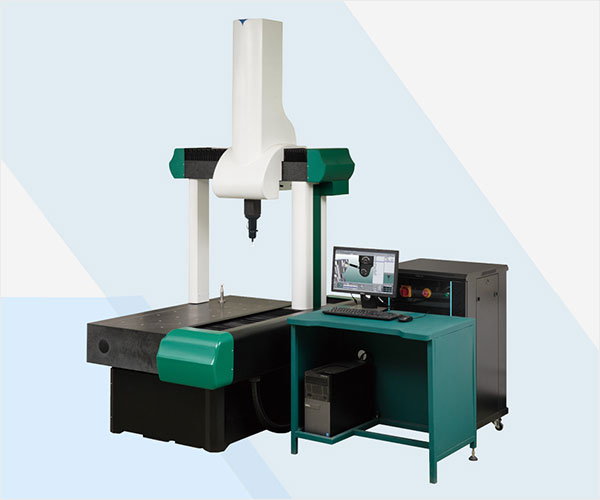
Principle of Coordinate Measuring Machine
- The contact type of the coordinate measuring machine records the position information of the point by applying the probe to the measurement target.
- The probe is made of ceramic or ruby, which has almost no thermal expansion due to temperature.
- Since the probe is brought into contact with the probe, the measurement target may be slightly scratched.
- On the other hand, the non-contact type records the position information by shining a laser on the target and reading the three-dimensional coordinate information.
- Demand has been increasing in recent years because the non-contact type is not scratched.
- In the past, the contact type had higher lens accuracy and measurement function, but due to technological advances, the non-contact type has improved to the same extent as the contact type.
- In addition, advanced image processing technology is used for both contact type and non-contact type, and the measurement target can be displayed three-dimensionally.
- There are two types of control methods for the CMM, one is manually set by a human and the other is a computer-automated CNC method.
- Since the diameter of the circle is calculated by measuring the position information of at least three points, an error may occur if the object has burrs or chips.
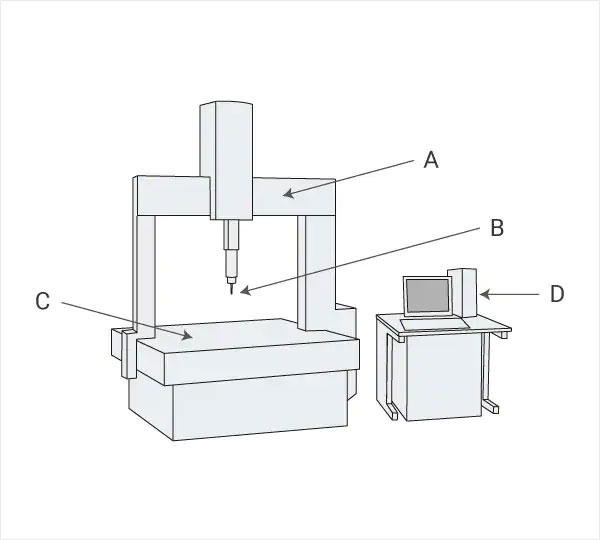
Types of CMM Service
The names and classification methods of coordinate measuring machines differ depending on the type of measuring device and the measuring method.
・ Classification by installation method
- Stationary type
- Portable type
・ Classification by appearance
- Gate type
- Articulated arm type
・ Classification by measurement method
- Contact type
- Non-contact type
- Laser tracker
- Layout machine
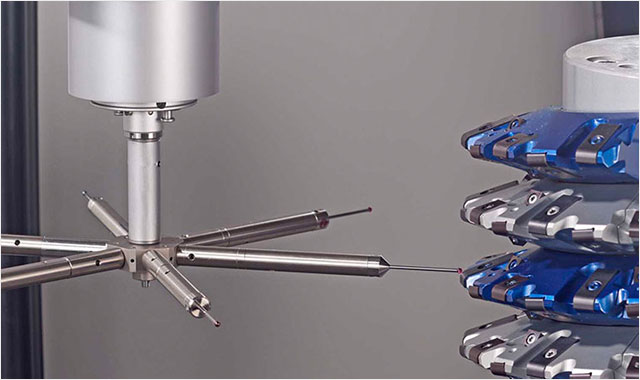
Advantages of CMM Service
- The advantage of the CMM is that it can measure items that are difficult to measure with other measuring machines with high accuracy.
- For example, the coordinate measuring machines of a specific point (hole, etc.) from the virtual origin are difficult to measure with hand tools such as calipers and micrometer. In addition, it is difficult to measure using virtual points and lines and geometrical tolerances with other measuring machines, but it is possible to measure with a three-dimensional measuring machine.
- In this way, the coordinate measuring machines is said to be a versatile measuring machine because it can measure complicated contents.
- By making good use of it, it is possible to perform more advanced dimensional inspection and quality assurance.
How To Use a Coordinate Measuring Machine Service?
The object is placed on the object to be measured for 5 hours or more in advance and allowed to reach room temperature (generally 20 ° C) to prevent errors due to thermal expansion.
Based on our specialized knowledge, we perform initial setting (calibration) of the probe and perform measurement according to the handling procedure. The measured data can be imported into a personal computer and used as data such as 3D-CAD.
1.Stylus Calibration
- Calibrate the stylus (contactor) that touches the object to be measured and measures it.
- There are two purposes for calibrating the stylus.
- One is to recognize the sphere center coordinates of the stylus.
- The other is to set the sphere diameter of the stylus.
- By setting the sphere diameter of the stylus, you can offset the radius from the point you are actually touching (outside the sphere) to the coordinates of the center of the sphere.
- For calibration, a sphere with a known diameter and a high degree of new sphere, called a reference sphere, is generally used.
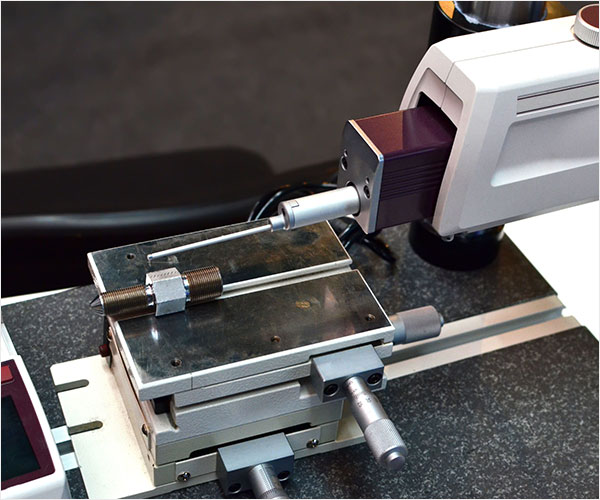
2.Handling Precautions
- Depending on the model, it is possible to measure up to the order of 0.1㎛, but proper use and management are indispensable to obtain measurement accuracy.
- Make sure that the moving parts move in parallel and vertically during use.
- Also, use a standard device to check that there are no indication errors.
- Accurate measurement requires acclimatization of the object to the temperature of the measurement chamber.
- Alternatively, you can make corrections by setting measurement parameters.
3.Equipment Maintenance
- Regular maintenance and inspection are required for general CMMs in order to continuously perform high-precision measurements.
- Especially in the case of a portal type CMM with sliding parts, it is necessary to replace worn parts, lubricate, and clean.
4.User training
- Since you need to be careful when handling a CMM, advanced skills are generally required.
- Depending on how it is handled, it may be damaged and a high repair cost may be incurred.
- Therefore, a full-time inspector often handles the operation, and it generally takes a long time to train them.
